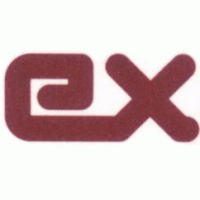Anyway, I've been doing my best to research UEFI - in particular booting WinPE on UEFI systems. I'm pretty confused due to the sometimes conflicting information I've come across, hence this post. If someone can clarify/confirm any of the following then please help.
1] - UEFI systems can be 32-bit or 64-bit, but not both?
2] - a 32-bit UEFI system cannot boot a 64-bit WinPE?
3] - a 64-bit UEFI system cannot boot a 32-bit WinPE?
4] - the UEFI boot file is \EFI\boot\bootia32.efi on 32-bit UEFI systems?
5] - the UEFI boot file is \EFI\boot\bootix64.efi on 64-bit (amd64) UEFI systems?
6] - if \EFI\boot\bootia32.efi is not available then bootmgfw.efi can be copied from a 32-bit Windows installation (path \Windows\boot\EFI\bootmgfw.efi) and renamed as \EFI\boot\bootia32.efi? Or alternatively the same file can be extracted from 32-bit install.wim.
7] - if \EFI\boot\bootix64.efi is not available then bootmgfw.efi can be copied from a 64-bit Windows installation (path \Windows\boot\EFI\bootmgfw.efi) and renamed as \EFI\boot\bootia32.efi? Or alternatively the same file can be extracted from 64-bit install.wim.
8] - the only boot files actually required on a UEFI system (for WinPE boot) are -
* \EFI\boot\bootia32.efi (or bootx64.efi on amd64 UEFI systems)
* \EFI\microsoft\boot\BCD
9 - if a hard disk is used, or a fixed type USB disk, then the disk should be converted to GPT and should include the following partitions -
* EFI (FAT32)
* MSR (128 MB)
* Seperate partition for data
10 - Microsoft recommends that the EFI partition not contain WinPE, however WinPE will boot from this hidden partition?
11] - Removable media cannot be converted to a GPT disk?
12] - if Removable media is used then it should contain one FAT32 partition containing the EFI boot files?
13] - if removable media with one FAT32 partition is used then this partition can also be set as active and the same device can be booted on BIOS based systems providing that bootmgr and \boot\BCD are also present?
14] - the Compatibility Support Module (CSM) provides legacy BIOS compatibility and will boot MBR partitioned disks.
Any help/clarification/information will be appreciated as my tests so far have been limited to VMWare Player with the following workaround manually added to the virtual machine configuration file -
firmware="efi"Regards,
Misty






















